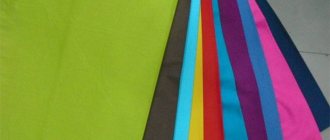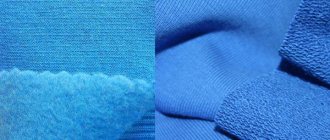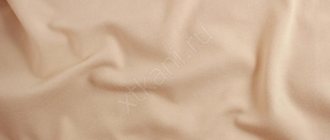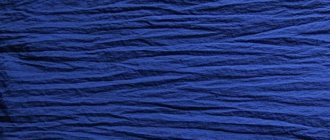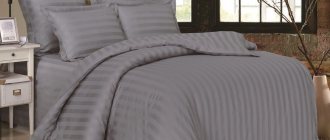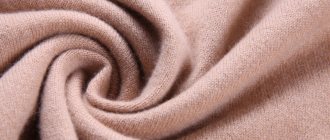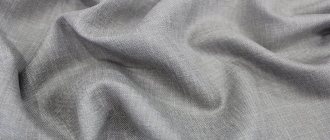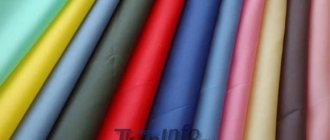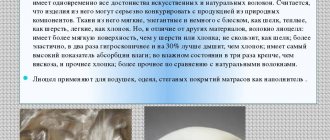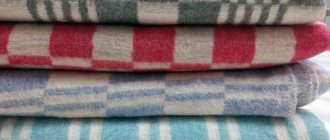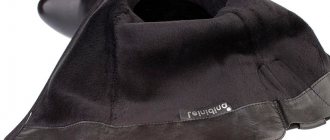Neoprene is a synthetic cotton rubber, the closest cousin of rubber. Its second name, foam rubber, more accurately indicates the characteristics and composition of the material. Let's take a closer look at what it is - neoprene fabric. It was born in the 1930s as a replacement for expensive natural rubber. He found his real calling only in 1953, when chemist-technologist Georges Buchat created a wetsuit using neoprene.
The production of this fabric is very far from the usual processes of thread formation, spinning or weaving.
Neoprene: composition
Neoprene is a chloroprene synthetic rubber, invented at the beginning of the 20th century. Currently, it is produced in many European countries: Russia, Germany, France, Italy.
The base is an elastic sponge, the structure of which resembles a honeycomb. Cells can be "closed" or "open".
The workpiece is cut, laminated on one or both sides, and then, depending on the thickness, cut into plates or rolls.
| Italian manufacturers use a variety of materials for lamination: the fabric may include nylon and lycra, cotton and viscose, and reinforced threads. |
Neoprene fabric - what is it, description of composition
The raw materials are subjected to mechanical processing, then vulcanization and, after long exposure, formed into sheets of different thicknesses.
Rubber production
The formation of a cellular structure – pores – is fundamental in the manufacturing process. They look like small bubbles and are filled not with air, but with nitrogen, which increases the thermal insulation properties. On the outside, neoprene can be covered with fabric - polyester, cotton, or painted. The first option is used to protect the material from cuts, the second is used for camouflage. Read about various types of fabrics and areas of application in this material.
The inner surface of the material is more interesting. Here's her description
- An open pore is a section of bubbles. When in contact with the skin, they work like microsuction cups. The fabric fits the body perfectly, does not restrict movement and provides excellent thermal insulation. For diving in cold water, this option is preferable. A dress that can only be worn with soap - this is said about open-cell neoprene. The recommendation should be followed literally: soapy water temporarily neutralizes the action of the microsuction cup. After drying, the fabric tightly covers the skin.
- Spraying is a paint-like coating that makes dressing more comfortable - without soap. The coating is applied to open pores, but it does not impair the thermal insulation properties. As manufacturers, for example, Yamamoto, claim, the spraying reflects the heat emitted by the skin. Copper, gold, titanium, black coating and so on are used.
The sprayed material is 15–20% more expensive than the open-pore version. The usefulness of spraying is still being discussed.
Characteristics of neoprene material
Foam rubber has excellent technical characteristics rather than user characteristics. A number of qualities make it indispensable in its field, but exclude it from the sphere of general consumption:
- Complete waterproofness is characteristic of all rubbers, including artificial ones.
- Thermal insulation properties are determined by the porous structure of neoprene. Again, they are most in demand for water sports. When diving, a diver cannot wear warm clothes under his wetsuit, and the water temperature drops quite noticeably as he dives. Neoprene provides more than excellent thermal insulation. The combination of these two qualities excludes neoprene from the category of fabrics for casual wear. The material is absolutely impermeable to moisture and air. It is not advisable to wear clothes made from it for more than 2-3 hours a day.
- The density and thickness of the fabric may vary.
- Neoprene is chemically inert and can withstand without harm not only the action of a strong solution of salts - sea water, but also oils and petroleum.
- Elasticity – neoprene fabric not only fits the body, but also fixes it, since neoprene does not lose its elasticity even with great thickness.
The uses of neoprene are very diverse. It is used for sewing suits for diving, spearfishing, and surfing. Thinner and lighter options are used for sewing clothes - swimsuits, sports equipment, dense ones - for protective clothing and shoes.
Neoprene: material properties
Since the fabric was originally created for sewing special clothing (wetsuits for divers, equipment for rescuers, climbers), the basic characteristics of neoprene were of particular importance:
- strength, resistance to shock and mechanical stress;
- waterproof and elastic;
- ability to withstand temperature range from -55 °C to +90 °C;
- resistance to UF radiation;
- immunity to the effects of sea salt and chemically active substances.
In Italy, a country where everyone knows about textiles, the material was given decorative properties and made suitable for sewing comfortable clothes. The adapted version is sold as “fashion neopren”. Experts and buyers note:
- aesthetics and fashionable design;
- breathable structure and variety of textures;
- quality and type of surface treatment (single-sided or double-sided);
- interesting palette (plain and colored);
- thickness (from 1.5 mm to 12 mm), different densities and stretchability;
- resistance to deformation;
- tactile comfort.
Neoprene double sided
More than 100 neoprene options. The full catalog of neoprene is in our VKontakte group: View all neoprene See the full catalog of fabrics and accessories HERE...
From 1200 ₽
Neoprene with large print
More than 100 neoprene options. The full catalog of neoprene is in our VKontakte group: View all neoprene See the full catalog of fabrics and accessories HERE...
From 1200 ₽
Neoprene with pattern
More than 100 neoprene options. The full catalog of neoprene is in our VKontakte group: View all neoprene See the full catalog of fabrics and accessories HERE...
From 1200 ₽
Neoprene with floral print
More than 100 neoprene options. The full catalog of neoprene is in our VKontakte group: View all neoprene See the full catalog of fabrics and accessories HERE...
From 1200 ₽
Neoprene with wool
More than 100 neoprene options. The full catalog of neoprene is in our VKontakte group: View all neoprene See the full catalog of fabrics and accessories HERE...
From 1200 ₽
Neoprene dark
More than 100 neoprene options. The full catalog of neoprene is in our VKontakte group: View all neoprene See the full catalog of fabrics and accessories HERE...
From 1200 ₽
Neoprene bright
More than 100 neoprene options. The full catalog of neoprene is in our VKontakte group: View all neoprene See the full catalog of fabrics and accessories HERE...
From 1200 ₽
Neoprene mesh
More than 100 neoprene options. The full catalog of neoprene is in our VKontakte group: View all neoprene See the full catalog of fabrics and accessories HERE...
From 1200 ₽
Solid neoprene
More than 100 neoprene options. The full catalog of neoprene is in our VKontakte group: View all neoprene See the full catalog of fabrics and accessories HERE...
From 1200 ₽
Gray neoprene
More than 100 neoprene options. The full catalog of neoprene is in our VKontakte group: View all neoprene See the full catalog of fabrics and accessories HERE...
From 1200 ₽
*
Shown 1 to 10 of 10 (total 1 pages)
View all neoprene
II. Story
The advent of neoprene in manufacturing and the textile industry took a long time since the discovery of its ancestor, rubber.
It was first discovered in 1493 by Columbus in Central and South America. He saw the Indians playing with a large dark ball, which, surprisingly, was bouncing off the ground. Taking these balls in their hands, the Spaniards found that they were quite heavy, sticky and smelled of smoke. The Indians rolled them from the thickened milky sap (latex) that flowed from cuts in the bark of the Hevea tree and made waterproof galoshes from it, which stuck to their feet in the heat, and when stretched, they no longer compressed. Columbus brought several pieces of this amazing substance to his homeland, but at that time no one was interested in it.
For many years, the Spaniards tried to replicate the waterproof things (shoes, clothes, hats) of the Indians, but all attempts were unsuccessful. In the cold, such things became very fragile, and in the heat they stuck and stretched.
But it was not until 1839 that American inventor Charles Goodyear discovered that heating rubber with sulfur eliminated its unfavorable properties. He placed a piece of rubber-covered cloth on the stove, on which a layer of sulfur was applied. After some time, he discovered a leather-like material - rubber. This process was called vulcanization.
By that time, the special properties of natural rubber had already become known:
Soluble in hydrocarbons and their derivatives (gasoline, benzene, chloroform, carbon disulfide, etc.).
Insoluble in water, alcohol, acetone, natural rubber practically does not swell.
Destroys when interacting with air at room temperature (strength and elasticity decrease).
During the vulcanization process (the interaction of natural rubber with sulfur, sulfur chloride, organic peroxides (vulcanization) long macromolecular bonds are connected through sulfur atoms to form network structures) it retains high elasticity over a wider range of temperatures.
Due to the active use of this material in industry, the growth of its consumption, and the complexity of its geographical location, many scientists are thinking about producing synthetic rubber.
For the first time in 1910, Lebedev obtained synthetic rubber and its production became large-scale: it began to be used in a wide variety of industries, in tire factories, in the manufacture of conveyor belts, shoe soles, sealants, pipes, hoses.
High-tech modern neoprene fabric was created in 1930 by scientists of the American company DuPont, specializing in the production of polymers. The original name of the amazing material sounded like duprene, including part of the name of the developer and the chemical name of the resulting chloroprene. Among the advantages of the new product were high resistance to oils and chemicals, as well as low cost. But Duprene could not gain the desired popularity, as he exuded a persistent unpleasant odor.
Only after 7 years were scientists able to change the composition of the substance and get rid of this problem. A new type of synthetic rubber began to be called neoprene.
The fabric has been used in the textile industry since 1953, after one of the pioneers of scuba diving, the French inventor and scientist, diver and underwater hunter scientist Georges Busch, founder of the BEUCHAT company, introduced the first wetsuit made of this material. It was thanks to the inventions of Monsieur Bush that scuba diving acquired its modern appearance. Throughout his life, Georges never stopped developing equipment that changed the history of world scuba diving.
Types of Neoprene
Neoprene is produced in a wide range, classified into the following types:
- LS – soft;
- S – durable;
- NF – durable and fire-resistant;
- HS – dense;
- double-sided with increased thickness;
- perforated (or aeroprene);
- reticulate;
- textured (known as "shark skin").
You can also buy varieties with the addition of lycra, surfaces made of nylon, cotton, viscose and even with reinforced threads. Any of the options can become a beautiful, original solution when sewing comfortable clothes.
Neoprene: analogues
Synthetic rubberized fabrics that are used to make clothing and accessories with a protective moisture-resistant effect are very similar to neoprene. The rubber base is also laminated, glue and an extensive arsenal of fabrics are used.
Neoprene analogs, although similar in appearance, are less durable - they are easy to puncture and damage with sharp objects.
What can you sew from Italian neoprene?
The fabrics are suitable for making sportswear, casual wear, and models for special occasions.
Image of neoprene clothing (need photo link)
- Neoprene is ideal for sewing waterproof raincoats, jackets, and coats.
- Looks interesting in dresses, skirts, vests.
- Used for sewing swimsuits, tops, shorts.
Neoprene is a representative of high modern technology and is unlikely to complement a purely classic style. The best solutions are sporty, elegant, casual or futuristic, bright.
If you want to sew new wardrobe items from Italian neoprene, you should take into account the characteristics, care features, compatibility with clothing and accessories.
What to consider when cutting and sewing neoprene
- Sections of parts do not require overcasting. Necklines, armholes, sleeves and hems are often left open. Therefore, when cutting, it is important to maintain evenness; you can use scissors with zigzag blades.
- When processing cuts, bias tape is used.
- Sewing requires sharp and knitted titanium needles, special for dense and voluminous fabric.
- From the range of threads, durable nylon ones are recommended. Stitch length is medium (2.5-3.5 mm). Seams should be done at low speed.
Price per meter
On sale, neoprene products can be found much more often than sheets: the fabric requires special cutting and sewing methods. It is marked in a specific way: by model. Moreover, manufacturers of high-quality ready-made suits indicate which model of rubber they used.
If the product - a medical bandage, wetsuit, sportswear - does not indicate the model, for example, Yamamoto 20 Pro Dive, then we are most likely talking about cheap, low-quality fabric.
The price per meter depends on the density, sheet thickness, special processing, spraying, fabric layer, and of course, on the manufacturer.
- Yamamoto is one of the most famous manufacturers of foam rubber. Neoprene 3mm thick, open cell, costs $95 per sheet. Model 45-EL, 5 mm thick, costs $412 for the same sheet sizes.
- Heiwa/National produces smooth neoprene with high abrasion resistance. Sheet of category SK - for immersion up to 20 m, with a thickness of 7 mm costs from $134. NS at those permeameter is estimated at $215.
- Sheico produces rubber for suits used in spearfishing. Stiffer neoprene of category L, 7 mm thick, costs from $97, soft S will cost $101.
- Daiwabo products are very close in quality to Yamamoto products and are in the same price category. Daiwabo 35 open-pore sheet costs $350, and Daiwabo 35 smooth sheet costs $275.
Neoprene is a material that has a very clear purpose and is designed to solve specific problems. It cannot be used as a fabric for everyday wear, despite the periodic appearance on the catwalks of models made of light and thin rubber. But in the wardrobe of an avid diver you can find 3-4 wetsuits made of different types of neoprene.
